Got Latinx art? DePaul and Lubeznik in Michigan City make up for 'abysmal' lack.
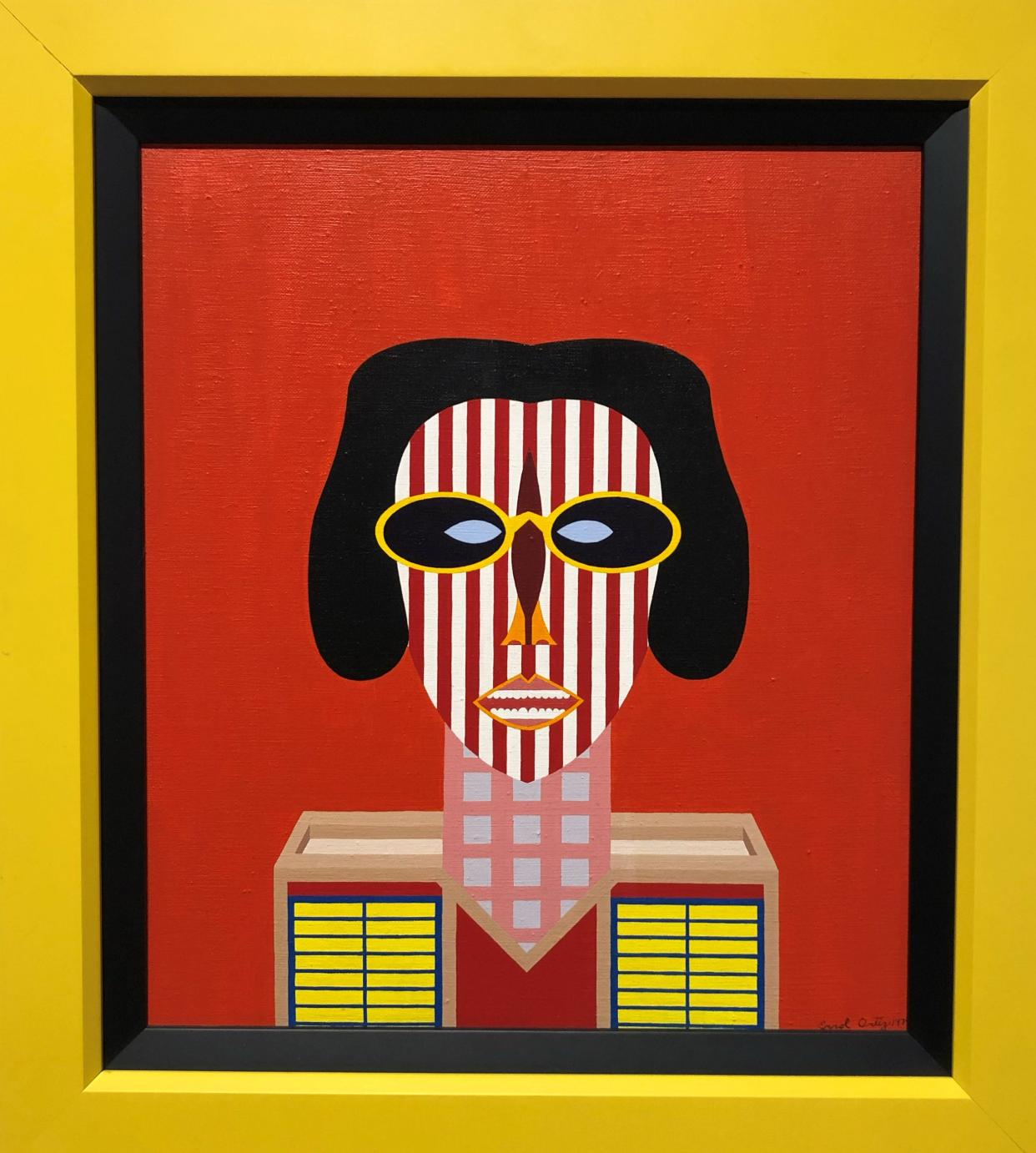
The cloth with rusty imprints of the U.S.-Mexico border wall is so earthy and subtle — neither as flashy nor seductive as the art around it — that, Exhibit Director Lora Fosberg says, “You almost want to dismiss it.”
“But then you’re glad you didn’t,” she adds.
That mirrors the reality for many overlooked Latinx artists that the DePaul University Art Museum in Chicago is trying to correct.
And, now, so is the Lubeznik Center for the Arts in Michigan City with the 41-piece exhibit bearing sculptures, a cartoon, a video, graphics, paintings and mixed media from nearly 30 artists, titled “LatinXAmerican,” that Fosberg culled from DePaul’s efforts. It’s on display through June 11.
DePaul museum Director Laura-Caroline Johnson says the university recently reckoned with its “abysmal” representation of its own Latinx community. Out of a collection of some 3,500 pieces, she says, only 70 to 80 works were by Latinx artists. That paled in comparison with Chicago’s more than 30% Latinx population and the 16% who make up the student body, she says.
Upcoming development: A 'true downtown': Michigan City complex to feature 12-story apartments, new train station
In Fosberg’s words, DePaul took the bad record and "shouted it out.” Johnson agrees with that description, adding, “In order for the museum to stay relevant, it is important to be sure you’re reflecting the community you live in … (and to show) that artists are here doing important work.”
In 2020, the DePaul museum committed to an all-Latinx exhibit and to acquiring only Latinx art. Because that began as the pandemic did, the originally one-year exhibit stretched through 2021. And Johnson says the acquisitions, which have added works from 25 artists so far, will stretch through 2024.
“LatinXAmerican” at the Lubeznik is almost half of DePaul’s now-closed exhibit. Fosberg says she chose pieces that were accessible — each with something that would intrigue an average person — plus Fosberg’s own taste for humor. None of the pieces are traditional. They each speak to modern issues, from immigration to the split Latin American identity.
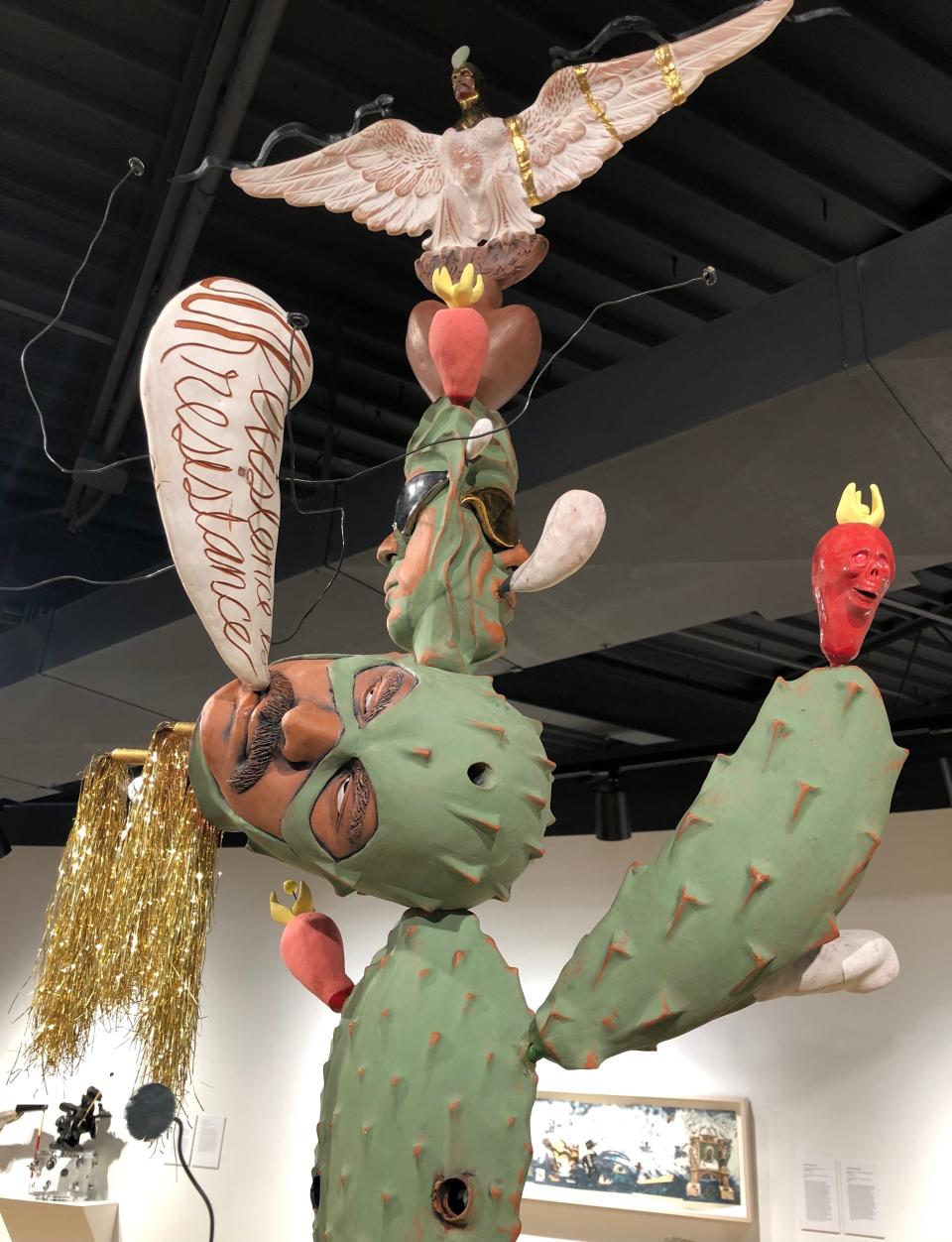
In the sculpture by Salvador Jiménez-Flores, “Nopales Hibridos,” or hybrid cactus, cleverly perched ceramic pieces form human heads on a cactus, including a masked Mexican wrestler with a cartoon bubble coming from his mouth saying, “Your existence is resistance.” It’s playful, Fosberg says, but shows Mexican toughness and ascension to power.
An elongated cartoon scene depicts the violent history of capitalism and imperialism, "Illegal Alien’s Guide to the Concept of Relative Surplus Value,” by internationally known artist Enrique Chagoya.
“For me, it was really accessible,” Fosberg says. “A lot of people stand there for a while to figure it out.”
Irish art: Who are the Irish? University of Notre Dame's Snite Museum explores a century of art
And a 1970 acrylic painting — a Vietnam War-protesting portrait of a face that has a missile for a nose and industrial building for a body — comes from Errol Ortiz, who was among the so-called Chicago Imagists who mimicked pop culture images in the 1960s and 1970s.
“I studied so much about the Chicago Imagists, and his name never came up,” Fosberg says regrettably. “We’re all so remiss. This reflects on how history gets recorded and who gets missed.”
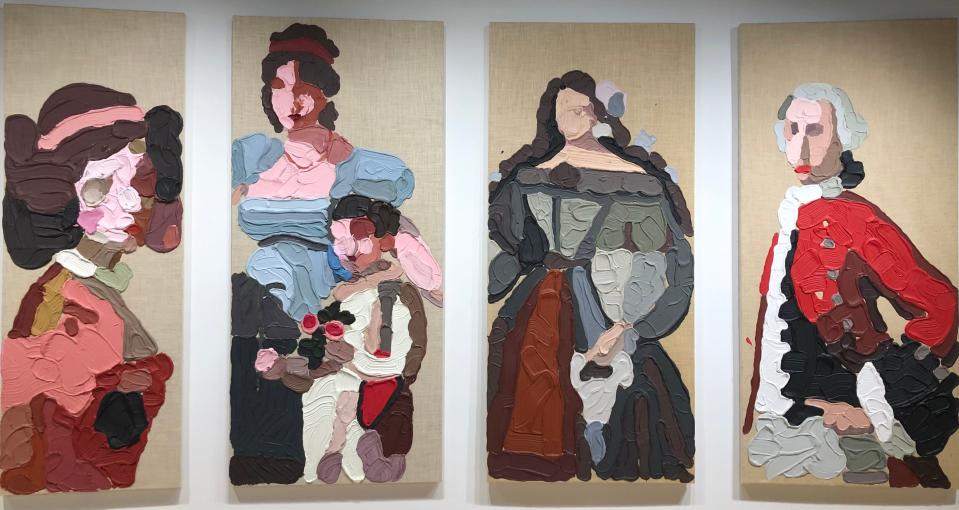
Johnson says the Lubeznik exhibit is part of the ripple effect that DePaul wanted to see — helping to make up for a similar lack of representation elsewhere in Chicago and the Midwest. She’s noticed that a few Chicago galleries have started to pick up Latinx artists, too.
"I felt it was important to bring it here," Fosberg says, "even though we have diversified art."
All of the exhibit’s artists have some connection to Chicago, and their Latin roots span the two American continents. The word Latinx is used, rather than Latino or Latina, as a nonbinary and gender-inclusive way to describe people with Latin American heritage who live mostly in the U.S. As Lubeznik officials point out, though, some artists in the exhibit prefer to identify themselves by their nationality, race or ethnicity instead.
Mario Ybarra Jr.’s acrylic portrait of a man with a mischievous smile, “Dr. Jekyll,” is a neon color-splashed image that he uses to explore the split identity of Mexican Americans.
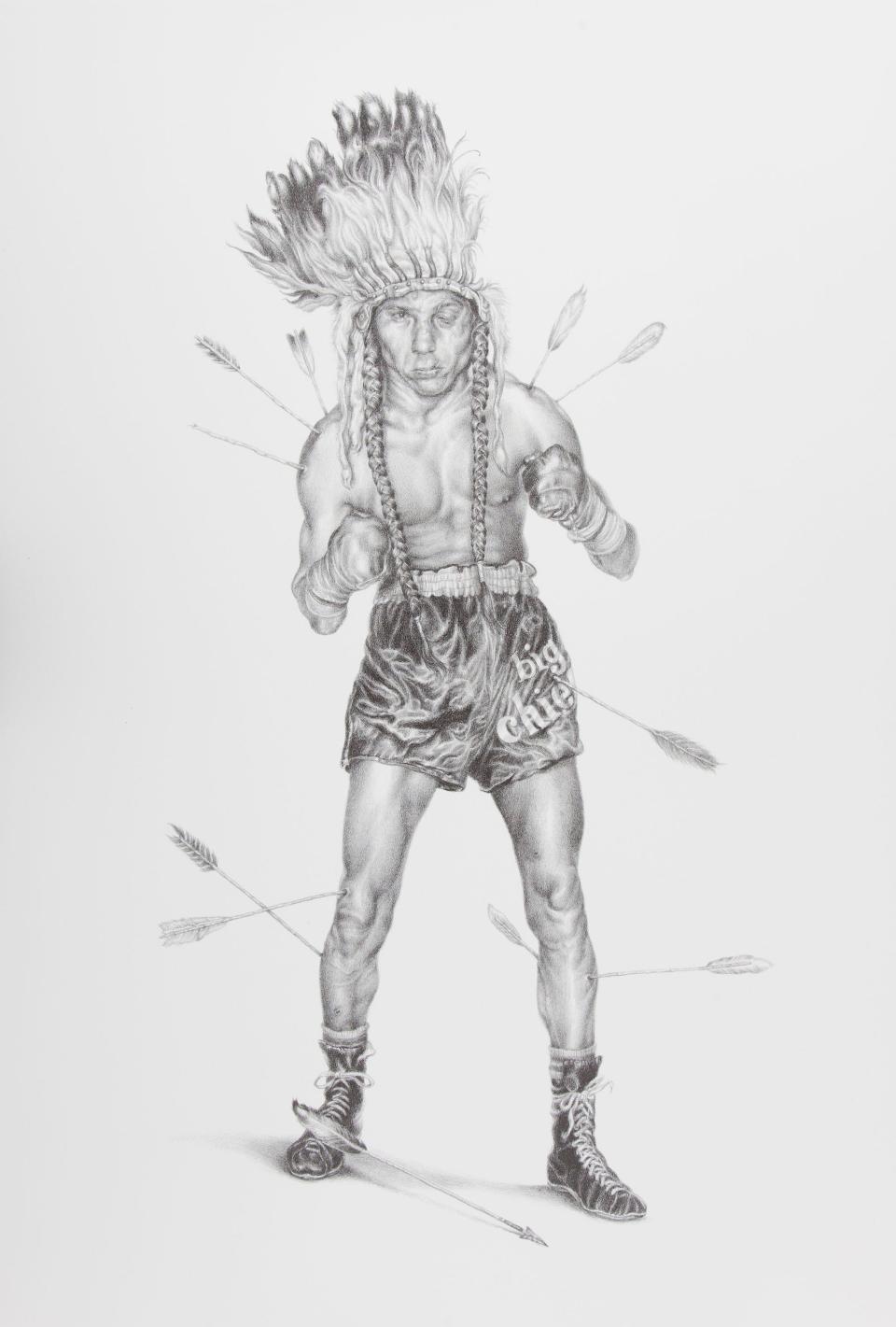
Vincent Valdez’s “America’s Finest” is a lithograph of a Native American boxer with a battered face, a tattered headdress and arrows piercing his limbs, likening Native Americans to the martyr Saint Sebastian.
Here, visitors also find art that uses discarded objects, such as Edra Soto’s collection of cleaned-up cognac bottles that she’d found in vacant Chicago lots, or Derek Webster’s funky sculpture of “Seurat Lady,” adorned with bottle caps, beads and keys he’d found while working as a custodian in the city’s public schools.
A 24-minute documentary video plays in short episodes as Marisa Morán Jahn crossed the country to tell stories of domestic workers.
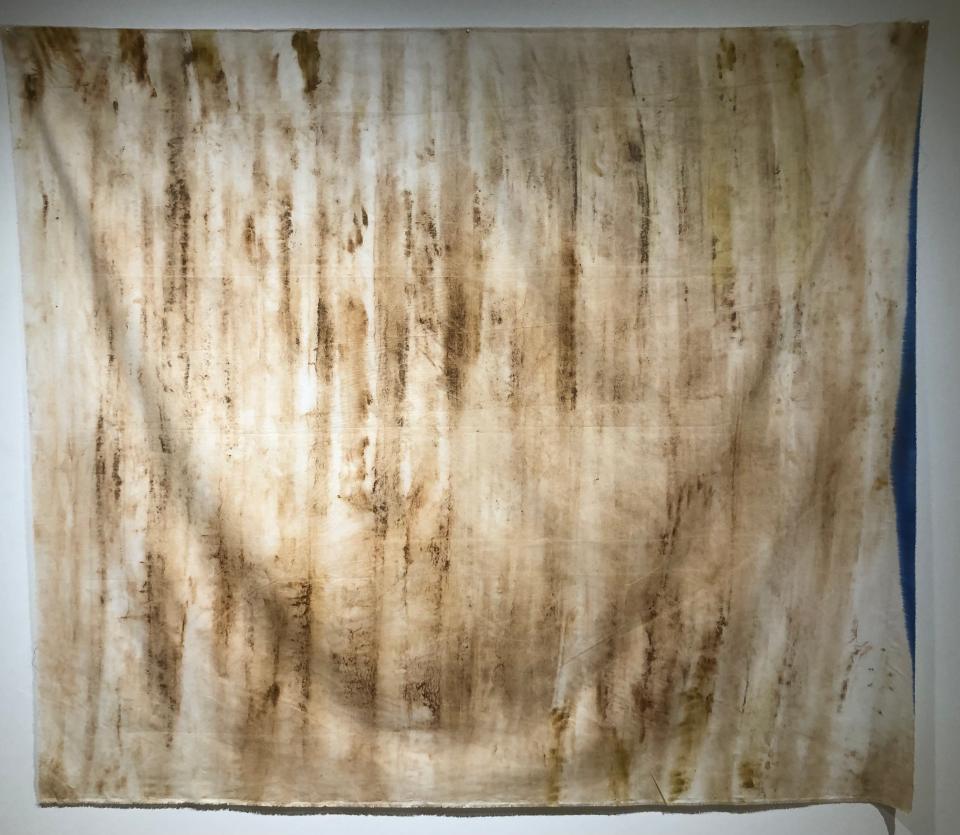
In “America’s Wall,” Fosberg feels the emotions that the border wall evokes. Tanya Aguiñiga had taken a small team of women who used a cotton cloth and vinegar to make a rusty impression of the wall in a place that the artist calls (perhaps as a nickname) Shroud of Turin.
It may seem like an absurd thing to do. But Fosberg says of border crossers, “You have to do something absurdist to remind us that they exist.”
On exhibit
• What: “LatinXAmerican”
• Where: Lubeznik Center for the Arts, 101 W. 2nd St., Michigan City
• When: Through June 11
• Hours: 11 a.m. to 4 p.m. CDT Saturdays and Sundays and 10 a.m. to 5 p.m. CDT Mondays, Wednesdays, Thursdays and Fridays.
• Family Day: This free day includes a tour, snacks and art making from 10 a.m. to 3 p.m. CDT April 23.
• Tours: Free gallery tours are available for small groups and organizations in English and Spanish. To schedule a docent-led tour, contact Janet Bloch at jbloch@lubeznikcenter.org. For children's tours, contact Nelsy Marcano at nmarcano@lubeznikcenter.org.
• COVID protocol: Masks required
• Admission: Free
• For more information: Call 219-874-4900 or visit lubeznikcenter.org.
This article originally appeared on South Bend Tribune: Latinx art at Lubeznik Center for the Arts Michigan City from DePaul

